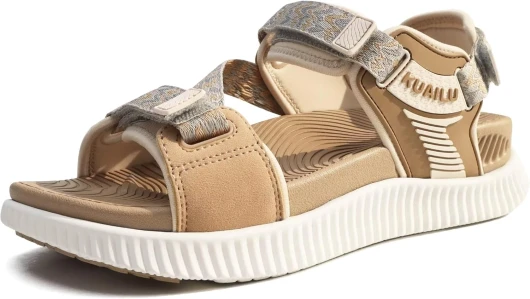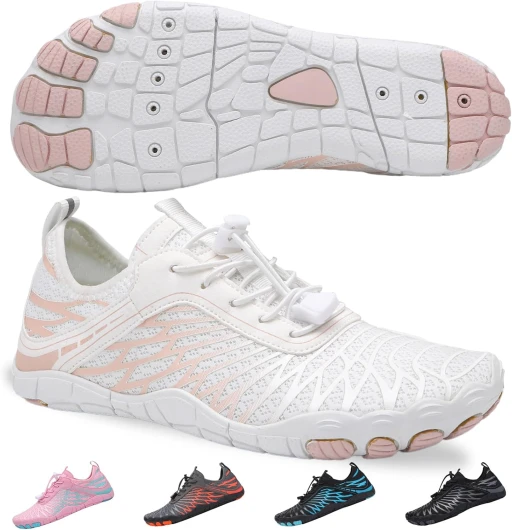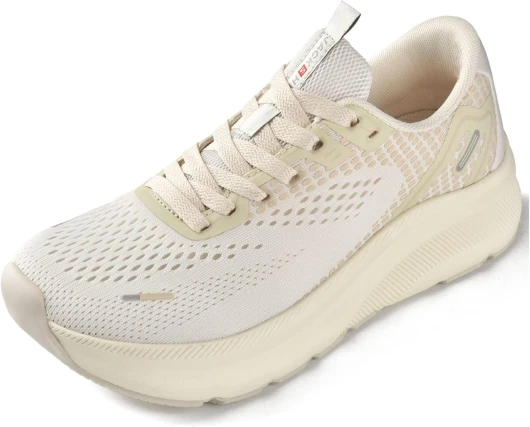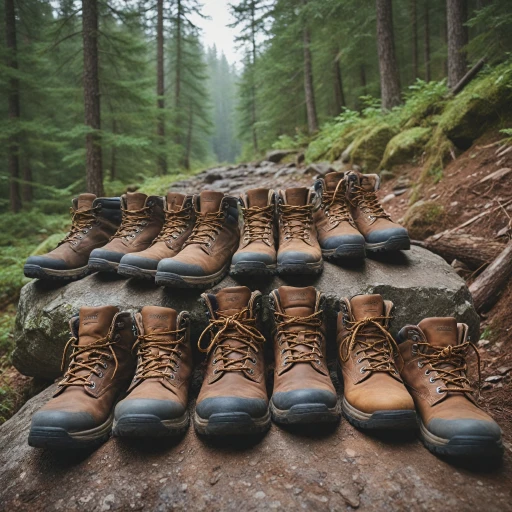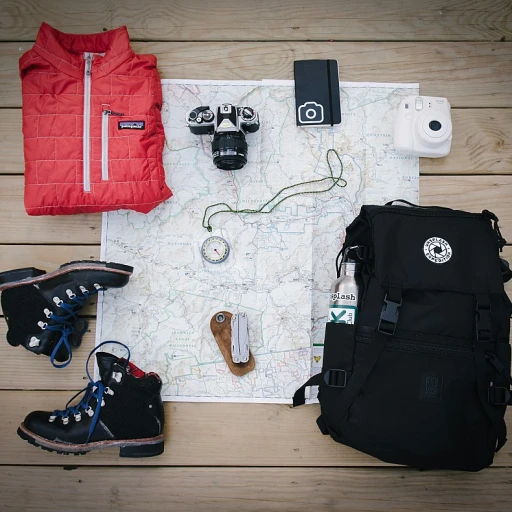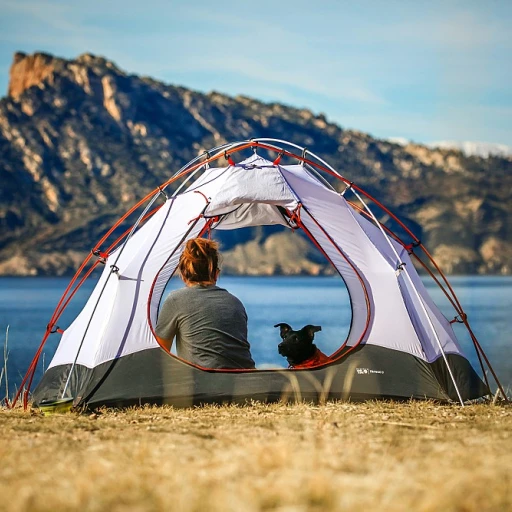
Understanding plantar fasciitis and its impact on hiking
The Challenge of Hiking with Plantar Fasciitis
Plantar fasciitis can indeed be a troublesome condition for avid hikers. The pain and discomfort centered around the heel and arch can make the beloved walking activities feel unbearable. Whether you're traversing rough trails or embarking on a seemingly gentle stroll, managing this condition is crucial. The plantar fascia, a thick band of tissue supporting the arch, can become inflamed due to various factors, such as excessive strain or improper footwear. Hikers need to consider this when selecting the shoes for their outdoor adventures. Proper support and fit are vital, ensuring that the shoes can provide relief and prevent further irritation of this sensitive area. The right footwear, which combines comfort and protection, can make a significant difference. Features like deep lugs for better grip and orthotic insoles for enhanced support can turn a painful experience into a bearable, if not enjoyable, one. Exploring options like well-made hiking boots and specialist hiking shoe brands can provide much-needed relief and support. For more in-depth insight into choosing the ideal hiking footwear, consider reading about AKU boots, renowned for their comfort and resilience, ideal for those experiencing plantar fasciitis symptoms. This added resource can serve as a valuable tool in selecting hiking boots that best suit your needs, ensuring your feet are well-protected and supported, allowing you to continue exploring the great outdoors without hindrance.Key features to look for in hiking shoes for plantar fasciitis
Features That Help in Alleviating Discomfort
When selecting the best hiking shoes for plantar fasciitis, it is crucial to prioritize features that provide sufficient support and alleviate pain. Your feet, particularly the heel and arch areas, are highly susceptible to stress, especially when hiking on uneven trails. Here's what to keep in mind:
- Arch Support: Shoes or boots featuring robust arch support are essential to keep feet comfortable by reducing strain on the plantar fascia. Consider shoes with built-in support or ones that allow for orthotic insoles.
- Cushioned Heel: Look for shoes boasting a cushioned heel counter to absorb impact with every step, lessening heel pain.
- Wide Toe Box: Give your toes plenty of space to wiggle. A wide toe box helps in preventing undue pressure on the toes and avoids exacerbating any existing discomfort.
- Deep Lugs for Traction: Opt for hiking shoes with deep lugs, ensuring reliable traction on uneven trails, contributing to a secure fit and reducing the risk of falls.
- Heel-to-Toe Drop: A moderate heel-to-toe drop provides a balanced, stable gait, facilitating smoother transitions during long walks.
High-quality hiking shoe brands often incorporate these features, ensuring terrain adaptability without compromising comfort. As you explore options, remember that taking the time to understand brands and their unique offerings can further inform your choice, ensuring a perfect match for your needs.
Top hiking shoe brands for plantar fasciitis relief
Top Brands Offering Relief for Hikers with Plantar Fasciitis
When it comes to choosing the best hiking footwear for managing plantar fasciitis, several brands come highly recommended by outdoor enthusiasts and experts alike. These brands are known for their designs catering specifically to foot issues, providing the necessary arch support and cushioning required to keep feet comfortable on trails.- Salomon: Renowned for their advanced technology in trail footwear, Salomon offers hiking shoes with excellent arch and heel support. Their shoes often feature responsive midsoles, ensuring an optimal heel-to-toe transition, crucial for those with plantar fasciitis.
- Merrell: Known for durability and comfort, Merrell hiking boots offer a wide range of options with added arch support and breathable materials. Their boots tend to have a roomy toe box which can be an advantage for hikers with specific foot needs.
- Keen: Famous for their wide fit, Keen shoes are perfect for hikers with wider feet or needing extra room. These shoes maintain a supportive heel counter and often come with removable insoles, allowing for customization with orthotic insoles.
- Hoka One One: Although primarily known for running shoes, Hoka One One provides a range of hiking shoes characterized by maximum cushioning, making them an excellent choice for reducing heel pain on different terrains.
- Brooks: While traditionally associated with running shoes, Brooks has expanded their reach into hiking footwear. Their focus on medical-grade orthotic comfort makes them a standout for those needing to manage plantar fascia pain during hikes.
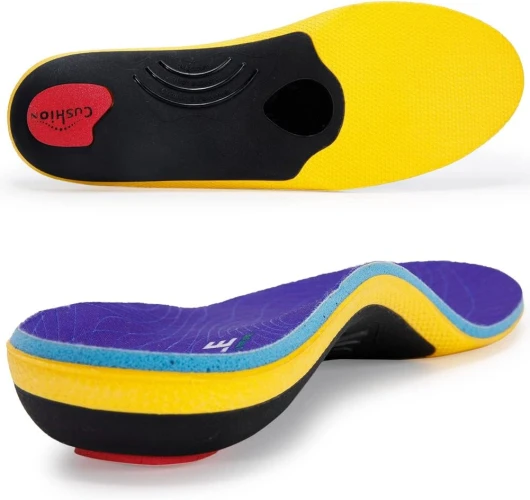
- + Durable design for heavy duty use
- + Shock absorption with every step
- + Supports plantar fasciitis and flat feet
- + Fits men 13-13 1/2 and women 15-15 1/2
- + High arch support for better stability
Expert tips for choosing the right hiking shoes
Strategies for Selecting Optimal Footwear
When selecting hiking shoes for plantar fasciitis, it's essential to combine knowledge of ideal specifications with personal comfort. Investing in the right pair not only ensures enjoyable trails but also aids in full bodily support.
- Proper Fit: A snug fit is crucial but avoid overly tight shoes. Ensure enough space in the toe box to prevent friction while walking.
- Arch Support: Superior arch support can maintain the natural shape of the foot, alleviating pressure on the plantar fascia. Shoes featuring orthotic insoles or customizable arch support are recommended.
- Cushioned Heels: Adequate heel cushioning helps absorb the impact while walking, minimizing heel pain. Look for a firm yet supportive heel counter.
- Heel-to-Toe Drop: A reduced heel-to-toe drop might provide a more natural walking movement, easing stress on the plantar region. However, this varies per individual's comfort and should be adjusted accordingly.
- Durability and Deep Lugs: Durable materials and deep lugs ensure safety and grip on varied terrains.
Exploring popular brands with a reputation for supportive designs, some retailers like Amazon or Zappos provide user reviews that can offer insights into everyday experiences of feet comfort. The exchange of feedback helps in aligning personal requirements with professional advice.
Whether you're exploring light trails or embarking on challenging mountain hikes, understanding the link between plantar fasciitis and the biomechanics in shoes can guide you to the best choices.
Maintenance and care for hiking shoes
Preserving Your Investment: Maintaining Hiking Shoes for Lasting Comfort
When managing plantar fasciitis while on the trails, your choice of shoes is only as good as the care you provide them. Here are some essential tips to help prolong the life of your hiking shoes and ensure they continue to support your feet effectively:- Regular Cleaning: After each hike, especially when venturing on muddy or rocky trails, remove any dirt or debris from your hiking shoes. Use a soft brush and mild soap to clean the surface, paying extra attention to the deep lugs to prevent buildup that can affect traction.
- Drying Properly: Wet shoes can lead to discomfort and foot issues like athlete's foot. Allow your shoes to dry naturally in a well-ventilated space, avoiding direct heat sources that can damage materials. Remove insoles and loosen laces to speed up the drying process.
- Inspect Regularly: Keep an eye on the condition of the heel counter, toe box, and arch support. These shoe areas are critical for proper plantar fasciitis relief and maintaining the correct gait. Address any wear and tear promptly to prevent discomfort.
- Rotate Your Shoes: If you're a frequent hiker or walker, consider rotating between two pairs of hiking shoes. This practice allows each pair enough time to dry and recover, enhancing the shoe's lifespan and performance.
- Check Fit Over Time: Your feet can change size and shape over time due to factors like weight fluctuation and age. Periodically assess the fit of your hiking boot and ensure the arch support remains effective. Replace them when you notice a decline in support and cushioning.
- Use Orthotic Insoles: Consider investing in orthotic insoles designed specifically for plantar fasciitis to enhance foot support. These inserts can provide additional heel and arch support, extending the life of your hiking boots by distributing impact more evenly across your foot.
Real-life experiences from hikers with plantar fasciitis
Personal Journeys with Plantar Fasciitis on the Trail
For many hikers dealing with plantar fasciitis, the journey to finding the best hiking shoes is as challenging as the trails themselves. Those who have successfully navigated this path often share a common theme: the importance of prioritizing comfort and support over aesthetics.
One hiker recounts their experience with a popular hiking boot brand known for its exceptional arch support and wide toe box. They emphasize how the deep lugs and robust heel counter provided the stability needed on uneven terrain, significantly reducing heel pain. Their advice to fellow hikers? "Invest in quality hiking shoes that fit your foot specs and sizes perfectly."
Another enthusiast highlights the transformative impact of orthotic insoles in their hiking shoes. After struggling with inadequate support from standard boots, the addition of custom insoles tailored to their foot's arch and heel contours made all the difference. "It was like night and day," they explain, "my feet felt supported, and I could focus on the trail rather than the pain."
For those with a preference for lighter footwear, a switch to running shoes with a lower heel toe drop proved beneficial. One hiker notes that while these shoes may not have the rugged durability of traditional hiking boots, the flexibility and cushioning they offered were unmatched. "The key is finding the right balance between support and comfort," they advise.
Real-world experiences also underscore the value of trying on multiple pairs and walking in them before committing. As one seasoned hiker puts it, "You can't judge a boot by its cover. Walking shoes that seem perfect on paper might not fit your feet the way you expect."
Finally, many hikers recommend platforms like Amazon and Zappos for their extensive selection and user reviews, which can provide insights into how different shoes perform in real-world conditions.

